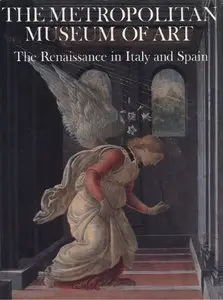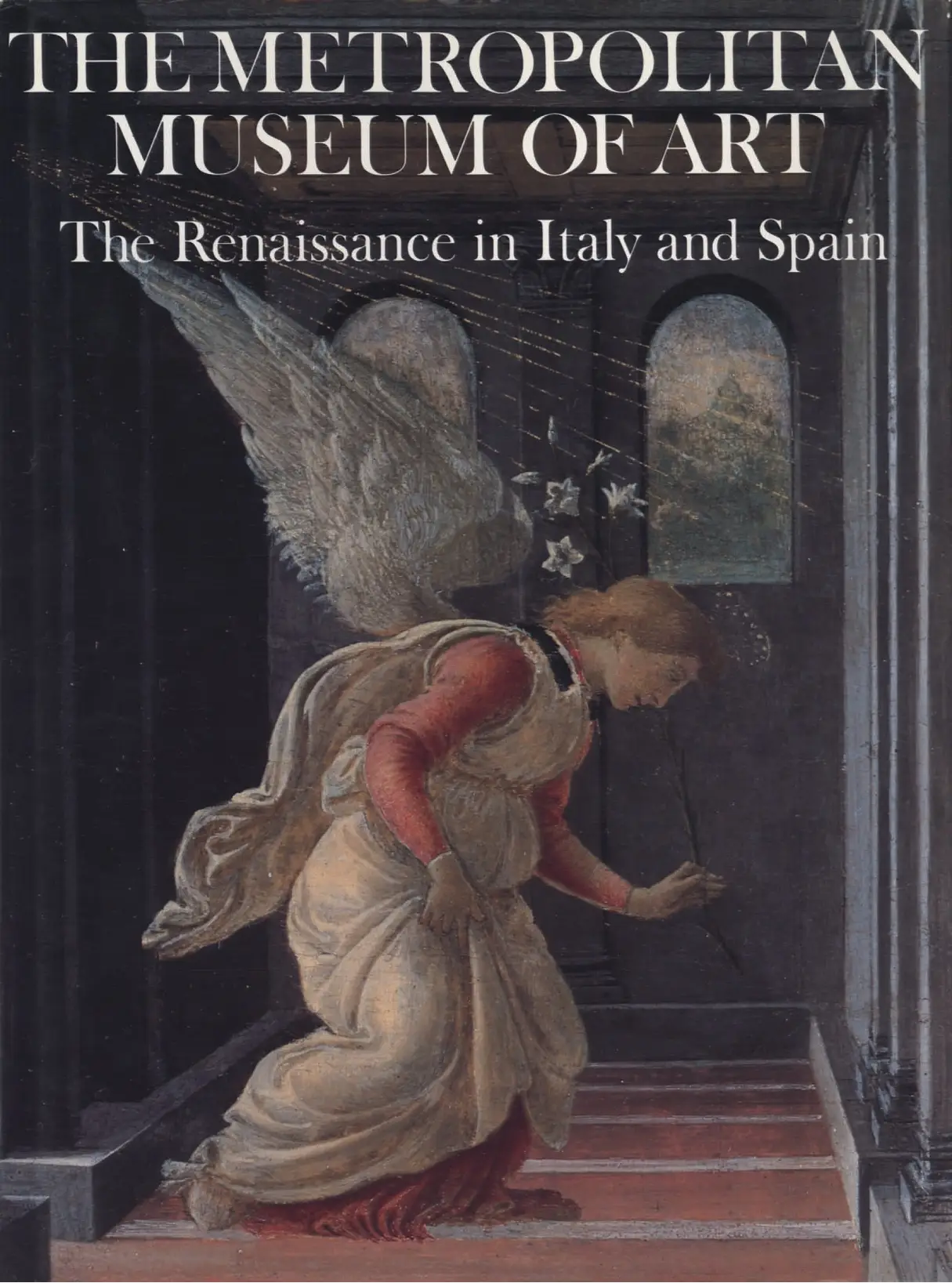The Metropolitan Museum of Art: The Renaissance in Italy and Spain
Metropolitan Museum of Art | 1987 | ISBN: 0870994328/0870994336 | English | PDF | 280 pages | 50.35 Mb
Metropolitan Museum of Art | 1987 | ISBN: 0870994328/0870994336 | English | PDF | 280 pages | 50.35 Mb
The Renaissance in Italy and Spain presents the full range of artistic endeavor from the first awakenings of the Renaissance spirit in the works of Berlinghiero, Giotto, and Pisano, to the climactic creations of Raphael, Michelangelo, Leonardo. Titian, and Veronese—the masters of the High Renaissance. The artists of Italy and Spain worked in every medium, all of which are represented in this volume: paintings, drawings, and prints; sculpture in stone, wood, and terracotta; glass, metal, and porcelain; furniture and musical instruments; costumes and armor.
Many of the most familiar masterpieces of The Metropolitan Museum's Renaissance collection are included here, among them, Sassetta's Journey of the Magi, Giovanni di Paolo's Expulsion from Paradise, Mantegna's Adoration, Bellano's David, Botticelli's Annunciation, Pollaiuolo's Battle of the Naked Men, Raphael's Madonna, Bronzino's Portrait of a Young Man, Michelangelo's Study for the Libyan Sybil, and Titian's Mars and Venus,. Shown, too, are lesser-known decorative works of great beauty and signal importance to the development of European art: an anonymousenamel and copper gilt plaque portraying "The Man of Sorrows"; a Spanish alharello, or earthenware apothecary's jar; a Venetian glass goblet; a magnificently crafted parade helmet and suit of armor; and two examples of porcelain utensils created for the Medici family.
Frederick Hartt, Paul Goodloe Mclntire Professor Emeritus of the History of Art at the University of Virginia and author of the magisterial History of Italian Renaissance Art, has written an introduction to thisvolume in which he explores the question of why the Renaissance developed as and where it did. Professor Hartt examines the styles and themes of the Renaissance in terms of the objects reproduced in thisvolume in order to explain exactly what we mean by the word "Renaissance" and how we may distinguish among the periods and schools of this fertile and exciting period in European art.
This twelve-volume series for the general reader reproduces works of art representing the resources of all eighteen curatorial departments of the Museum.
Agostino di Duccio –
Antico –
Antonello da Messina –
Bartolo di Fredi –
Bellano, Bartolommeo –
Belli, Valerio –
Bellini, Giovanni –
Benedetto da Maiano –
Berlinghiero –
Bologna, Giovanni –
Bordon, Paris –
Botticelli –
Bregna, Andrea –
Bronzino –
Carpacio, Vittore –
Correggio –
Crivelli, Carlo –
Damiano da Bergamo, Fra –
Duccio, Follower of –
Francesco di Giorgio –
Gagini, Antonello –
Ghirlandaio, Domenico –
Giambono, Michele –
Giotto –
Giovanni di Paolo –
Jacometto Veneziano –
Leonardo da Vinci –
Leoni, Leone –
Lippi, Filippino –
Lippi, Fra Filippo –
Lombardo, Tullio –
Lorenzo Monaco –
Lorenzo Veneziano –
Lotto, Lorenzo –
Mantegna, Andrea –
Master of the Barberini panels –
Michelangelo Buonarroti –
Michelino da Besozzo –
Moroni, Giovanni Basttista –
Mosca, Simone –
Negroli, Filippo –
Perugino –
Pesellino, Francesco –
Pesquera, Diego de –
Piero di Cosimo –
Pisano, Giovanni –
Pollaiuolo, Antonio –
Raphael –
Riccio, Andrea –
Robbia, Andrea Della –
Robbia, Luca Della –
Robetta, Cristofano –
Rossellino, Antonio –
Sarto, Andrea del –
Sassetta –
Signorelli, Luca –
Simone Martini –
Stati, Cristoforo –
Tintoretto –
Titian –
Torrigiano, Pietro –
Tura, Cosimo –
Veronese, Paolo –
Vico, Enea –
Vittoria, Alessandro –
Zuccaro, Taddeo.
Antico –
Antonello da Messina –
Bartolo di Fredi –
Bellano, Bartolommeo –
Belli, Valerio –
Bellini, Giovanni –
Benedetto da Maiano –
Berlinghiero –
Bologna, Giovanni –
Bordon, Paris –
Botticelli –
Bregna, Andrea –
Bronzino –
Carpacio, Vittore –
Correggio –
Crivelli, Carlo –
Damiano da Bergamo, Fra –
Duccio, Follower of –
Francesco di Giorgio –
Gagini, Antonello –
Ghirlandaio, Domenico –
Giambono, Michele –
Giotto –
Giovanni di Paolo –
Jacometto Veneziano –
Leonardo da Vinci –
Leoni, Leone –
Lippi, Filippino –
Lippi, Fra Filippo –
Lombardo, Tullio –
Lorenzo Monaco –
Lorenzo Veneziano –
Lotto, Lorenzo –
Mantegna, Andrea –
Master of the Barberini panels –
Michelangelo Buonarroti –
Michelino da Besozzo –
Moroni, Giovanni Basttista –
Mosca, Simone –
Negroli, Filippo –
Perugino –
Pesellino, Francesco –
Pesquera, Diego de –
Piero di Cosimo –
Pisano, Giovanni –
Pollaiuolo, Antonio –
Raphael –
Riccio, Andrea –
Robbia, Andrea Della –
Robbia, Luca Della –
Robetta, Cristofano –
Rossellino, Antonio –
Sarto, Andrea del –
Sassetta –
Signorelli, Luca –
Simone Martini –
Stati, Cristoforo –
Tintoretto –
Titian –
Torrigiano, Pietro –
Tura, Cosimo –
Veronese, Paolo –
Vico, Enea –
Vittoria, Alessandro –
Zuccaro, Taddeo.
Introduction by Frederick Hartt.





